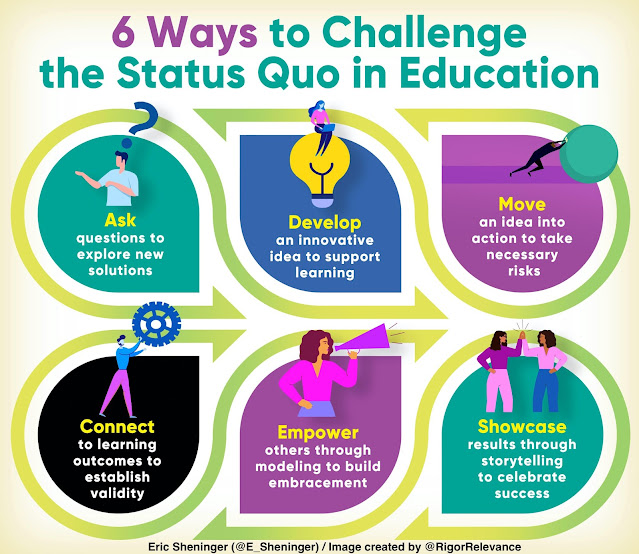We often hear about companies who are either unwilling or afraid to change and ultimately pay the price. Blockbuster is one that often comes to mind, but many others have become victims of the status quo. Robert Brodo shared this in relation to Kodak:
Challenging the status quo is defined as asking “why” and then identifying new and better ways of doing things. For example, in 1975, a young engineer at Kodak by the name of Steve Sasson invented the first digital camera. It was clunky and crude, it didn’t use paper and chemicals, and best of all, it was “electronic.” Yet, the leaders within Kodak refused to challenge the status quo and ask hard questions such as “Is there a better way of capturing the most important moments of life without taking a film cartridge to a camera shop?” There are hundreds of other similar stories about companies that went bankrupt because they couldn’t and wouldn’t create a culture that challenged the status quo.
Prior to the pandemic, change efforts were often stymied by the status quo. Typically, this came in the form of TTWWADI (that’s the way we’ve always done it), and the result was business as usual. In many cases, the mirage of great test scores being indicative of a thriving school culture that was adequately preparing learners for success was more than enough to keep trudging forward with a one-size-fits-all approach. As frustrating as this might be, it is easy to see why this is the case, and it isn’t just because of high standardized test scores. Comfort and fear often keep us in our perceived lanes of success. In the end, both contribute to maintaining the status quo, and that can negatively impact learners.
While change in education has historically been both tough and slow, the pandemic disrupted the way school was done across the globe. Many important lessons were learned, and innovative change was implemented at scale in a short period of time. The “clean slate” moment, as I have called it, saw resilient educators rise to the occasion in response to the most challenging event ever to impact the profession. While it might not have always been pretty or smooth sailing, the status quo was an afterthought. We must keep it that way.
I bring this all up because there might be a yearning to get back to the way things were before the pandemic. Maybe you have even seen this from your lens. Even though virtually everyone changed by necessity, some were not happy with remote and hybrid teaching or using technology. Others might have fallen into a sense of complacency. No matter the reason, it is up to you to tackle the status quo head-on. In Chapter 2 of Disruptive Thinking in Our Classrooms, I go into detail about shifting mindsets and helping others find comfort in growth to move past conventional thinking and ideas. Below are some ways that any educator can challenge the status quo:
- Ask questions
- Develop an innovative idea
- Move from an idea to action
- Connect to learning outcomes
- Empower others through modeling
- Showcase results through storytelling
Begin with questions such as why has it always been done this way, how might it be done better, and what are the outcomes that can be used to determine if the approach is valid or not? Develop ideas supported by research that can improve both instruction and learning, then begin to put them in place. When actions are taken connect them to outcomes to establish validity. As you find your groove, model to empower others to get on board. Success breeds success. Finally, the status quo can only be overcome through results. Embrace the power of storytelling and craft powerful narratives that illustrate why this approach is better for kids.
Settling for the status quo not only inhibits the creation of a disruptive thinking culture but also negatively impacts our learners. Don’t let your role inhibit you from becoming an advocate for something better. Always remember that leadership is about action, not position, title, or power.

No comments:
Post a Comment